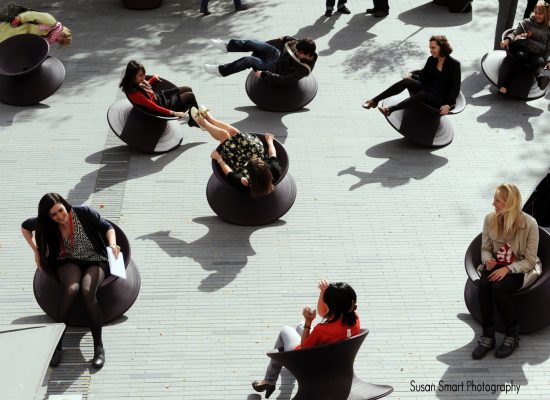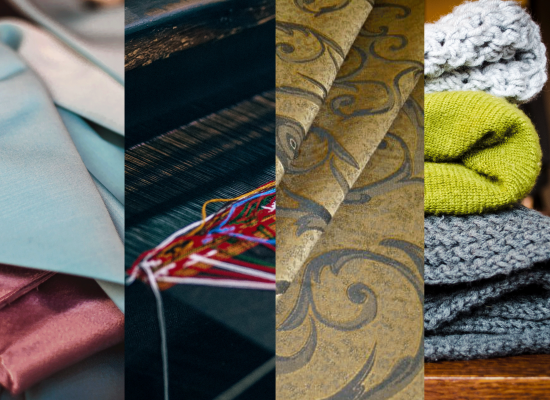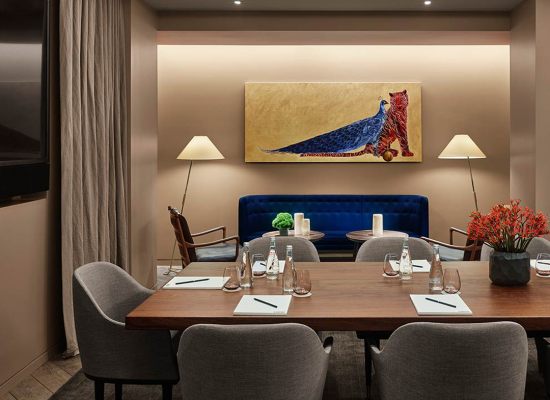A Quick Guide to Choosing Upholstery Fabrics

Choosing the right material types that are used for your furniture based on your lifestyle and your home’s interior design is important. The variety of upholstery fabrics to choose from, however, can be overwhelmingly extensive. Here’s how it can be less of a headache:
1) Gauge the durability
Usually, the first thing you would think about before buying a furniture is what colour to pick but it is a better idea to think about the number of washes the upholstery fabric could go through before it comes apart. The higher the thread count, the better. Woven patterns and tighter weaves hold up better than printed ones. Keep in mind to tell the sales person at the furniture store if the fabric is for light, medium or heavy use. Another measure for durability is the double-rub count. Frequently used furniture usually requires at least 15,000 double-rubs, while less-frequently used fabrics can be as low as 3,000 double-rubs.
2) Choose the fabric content
To help you narrow down the options and choose the fabric that suits your decorative design needs, the following list compares materials used to make upholstery fabric:
Natural sources
Cotton
One of the most popular fabric for upholstering furniture, its durability depends on the type of weave. It’s pleasing to the eye and to the touch but it is also prone to stains and wrinkles, while sunlight may cause it to fade over time. It wears easier than most fabric types but it also comes in many varieties. The premium graded ones are as lustrous as silk but lesser grades tend to be dull and fuzzy. It is easier to use when blended with other fibers.
Leather
Full-grain leather is the top layer of animal hide; it is considered as the highest quality of all leathers. The second-best leather grade is top-grain leather. It is split from the top hide, which would then be sandpapered to remove blemishes. Meanwhile, genuine leather commonly refers to leather made from the lowest quality portion of a hide, leftover after the highest quality portions have been removed. It is the third best type of leather but is commonly mistaken as having the best quality among different types of leather. In general, leather fabrics tend to be extremely durable but easily stained. They also age better but are sensitive to direct sunlight.
Wool
Obtained from sheep fleece, wool can be either soft and fuzzy or hard and smooth. This durable fabric neither fades nor wrinkles easily. It could also stand up to abrasion, soil and mildew, but it needs to be protected from insects. It is often blended with synthetic fiber for better performance.

Linen
This fiber shares many similarities with cotton and is also derived from plants. There are a variety of grades with the finer ones appearing smooth and silk-like. It is a strong fiber but it wrinkles easily. With more sunlight exposure, it will not fade but will be weakened. It does not tolerate very high humidity and is prone to mold and milder, but it is resistant to insects. Due to its high maintenance, it is not recommended for heavy use.

Silk
If you have pets, silk is not the best option. Resilient and strong yet delicate. It is long-lasting if it doesn’t get too exposed to sunlight. For a more textured silk, opt for the spun variety but if you’re looking for the smooth and shiny type, choose reeled silk. To make it last longer, it must be delicately cleaned if soiled. Suitable for adult areas such as formal living room.
Synthetic sources
Vinyl
If leather does not fit your budget then vinyl is the perfect alternative. There are different types out there but the expanded kind is often chosen for upholstery projects. Its waterproof quality makes it easy to wipe clean. Commercial grade vinyl upholstery, which is more of a foam-like material and due to its durability, it is often chosen to reupholster furniture. For outdoor uses, the marine-grade type is available. It contains additional treatments for ultraviolet protection and prevention of fading.

Acetate
A synthetic fiber created to imitate silk, hence its luxurious look and feel. It does not wrinkle easily, rarely pills and is long-wearing. It stands up to mildew but not so much to solvents, abrasion and sun damage. It is also resistant to shrinkage.
Acrylic
Created to simulate wool, it is a popular option for upholstery fabric due to its lower price tag and easy maintenance. Although it is not as easy to clean as wool, it can defy sunlight damage better. It also withstands staining and does not fade easily. For the upholstery’s added durability, it is often blended with natural fabrics. Heavy use, however, causes piling in cheap acrylics.
Nylon
This fiber is known for its long-lasting properties and durability. When blended with other fibers, it becomes one of the toughest upholstery fabrics. Stains on nylon can be easily removed. A very resilient material but it does tend to fade or pill as well as to attract surface soil, but not as likely to wrinkle. It also resists abrasion, mildew, and insects but does not hold up well to sunlight.

Olefin
An extremely durable synthetic fiber, It is also known to be lightweight. A great of choice for furniture that are meant to be put through heavy and long wear. It also holds up to abrasion, mildew, and dirt but it sensitive to heat and sun. Despite its great qualities, it does not fare well in the style department which means many do not feel that it is a good choice for indoor upholstered pieces.
Polyester
Although a popular synthetic fiber used in upholstery, it is seldom used on its own. It is often blended with natural or another synthetic fiber to ensure that it resists wrinkling and reduces fading. It is however, not recommended for blending with wool as it could worsen pilling problems. In terms of look and feel, its sheen could either be dull or bright while the feel could either be crisp or soft. It is overall a good choice that stands up well to daily use.

Rayon
Developed to imitate other popular upholstery fabrics such as cotton, linen and silk, rayon is made from wood pulp. It is an affordable fabric suited for upholstery purposes especially when it’s bonded with other fibers. Comfortable to the touch, it does not shrink and is resistant to mildew. However it could shrink and does not hold up well to abrasions. If untreated, it would be flammable but recent advancements have made it more high-quality and more practical for indoor upholstery.
Finally, don’t underestimate the importance of personal preference. Have a thought about whether or not the fabric you’ve chosen, fits with your personal style, and the rest of your furniture. If applicable, trust your senses and test the texture with your face, arms, and hands. We hope we’ve made the buying decision easier for you, and feel free to visit us in-store, or browse our website.
Zie Chong











